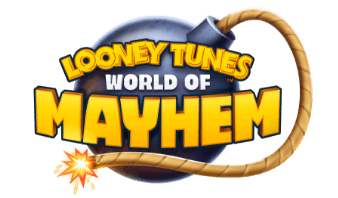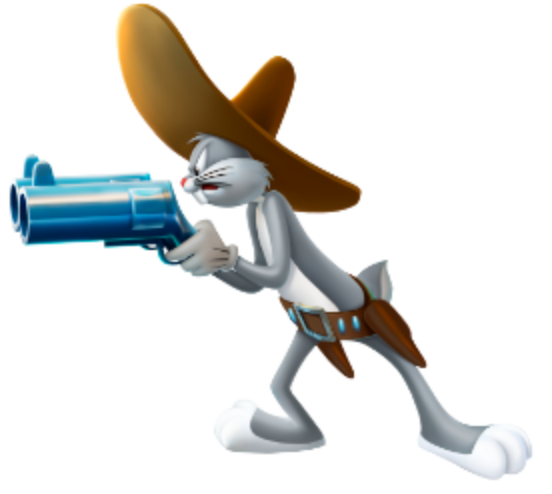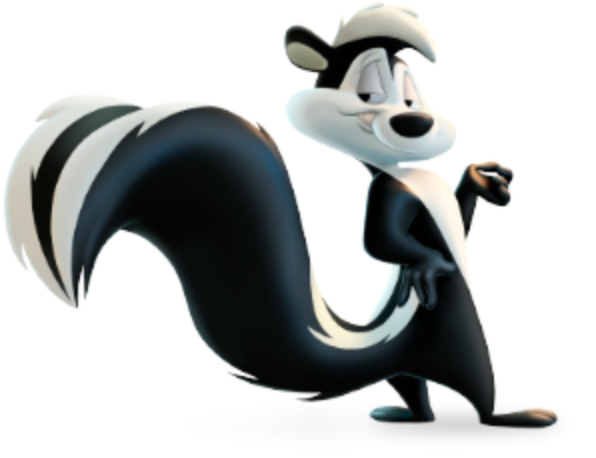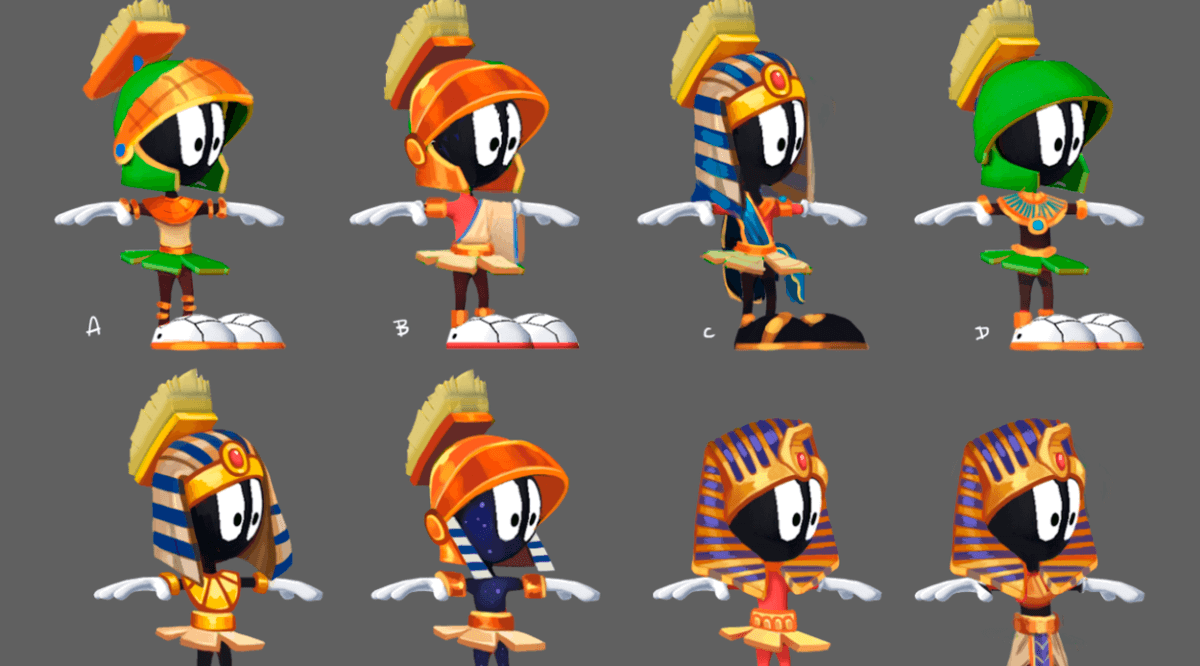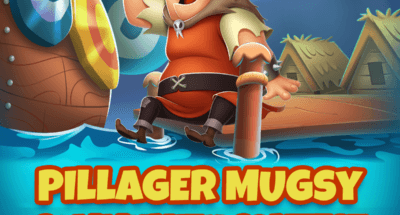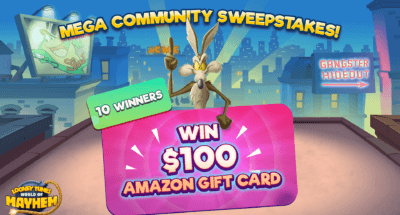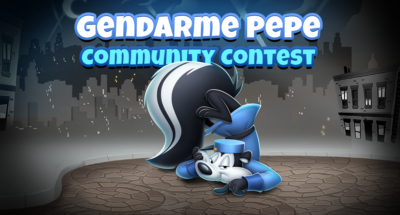What’s up, doc?
In this new blog series, we bring you an insight into what happens on our toon creation lab: from concept art to 3D modeling! During the next blog posts, we’ll be exploring his Cosmic Highness, Star-Pharaoh Marvin.
Off we go!
So everything starts with…
A Game Designer! For all our toons, in general, the initial idea for the theme and lore comes from our Game Designers. They create a small document explaining the general feel and references for each toon. From there on, the task falls on the hands of our Concept Artists!
Wanna do what a Concept Artist does? Check this blog post!
In a nutshell, the purpose of a Concept Artist is to explore ideas and communicate them visually as easily and effectively as possible. We usually sketch roughly tons of ideas that offer solutions in terms of design and mood without forgetting the genuine Looney Tunes feeling.
For Star-Pharaoh Marvin, we had a very narrow idea already of what we were looking for (this is not always the case). We knew it would be related to cosmic and Egyptian themes, so we gathered references both from the Looney Tunes universe and from real life. We always prioritize the existing classical references from the cartoons to keep it looney in every aspect, be it it’s style or the concept itself.
With the references in mind, we start sketching. At this phase of the character concept, we try not to overthink what may and may not work. Instead, we draw as many ideas as possible – one over-the-top idea may be the one that inspires the end result!
We think of the overall silhouettes and shapes of the character and how they will work together with value and color to make the character concept clear.
We then chose some of our favorite designs and present them to the team. It can be as many as you would like, but we try to keep it to a few. Some ideas are too similar and can be merged into one, some others are too outlandish and would simply not work.
It is at this stage that we gather what we find that speaks to us the most, and we try to make them as different from each other as possible.
After this first pass, we go to a round of feedbacks with Warner Bros.
With them, we talk about what works, what doesn’t, and most importantly: what could work. In this particular case, we have multiple things that we ditched away: the black shoes, for example, those made Marvin a little too out of character. Also, the galaxy body texture on the second drawing.
This is why it is important to have the concept as rough as possible in the beginning – we want to be able to easily discard things and easily try new ones!
The second pass of concepts is more focused, as we know better what we want, we have a clear (most of the times…) path.
It does not exactly mean that we will make fewer concept pieces or that they will be more polished. It only means that we can focus on what needs to be changed.
For example, in the case of Star-Pharaoh Marvin, at this stage, we decided to play with the top part of his helmet. We tried different ideas of what could be cool and that would make sense, lore-wise. We also changed some things in every one of the bodies, but as you can see, the changes were not that big. They are small things that make the character stand out and fit both the game world and the Looney Tunes lore:
After this phase, we generally can safely choose our best design. By that time, we know all of them are aligned with the IP (discussions with Warner Bros happen parallelly all the time, of course).
So, for the final Star-Pharaoh Marvin, we went with the green piece of cloth Marvin wears in some of his episodes, and for a pyramid on his helmet (which also reads better on small cellphone screens).
The character now goes to our 3D team where they will model it and texture it. They go roughly through the same process we go through: rounds of modeling, rounds of feedback, rounds of rounds, etc.
However, the Concept Artist team does not disappear from the picture. They’ll still be there to talk (and produce) animation sketches, props and pranks, finish Marketing materials, skill icons, and new buildings.
And that will be all for this first post. Stay tuned for the next installment in the series, folks!
Writen by Ilona Reitsma, Concept Artist at AQUIRIS
